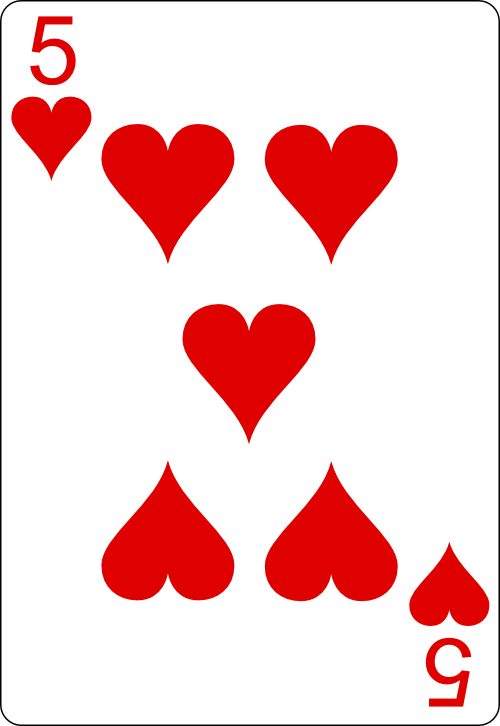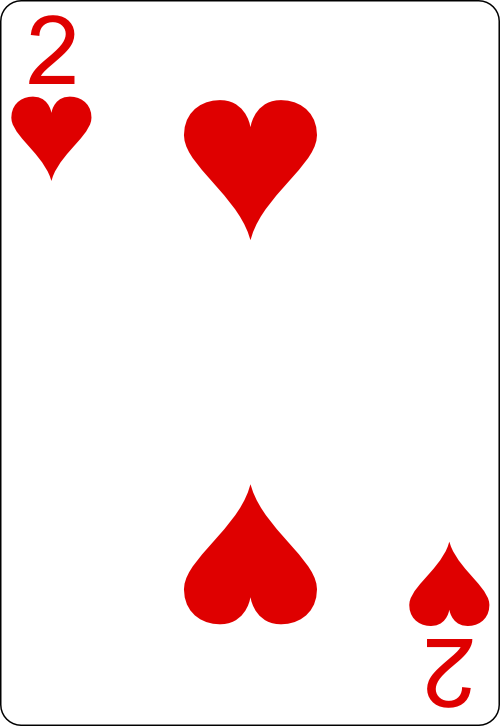Introduction to Poker Odds
Being proficient in poker is not just about bluffing your way to victory or having a good poker face. It’s also about understanding the math behind the game. A key component of this math is poker odds.
Understanding the Importance of Odds in Poker
Odds play a crucial role in poker, shaping the decisions a player makes at every stage of the game. They provide a mathematical representation of the likelihood that a particular outcome will occur. By understanding and calculating these odds, players can make informed decisions about when to fold, call, or raise. This allows them to minimize losses, maximize gains, and strategize effectively.
For example, if a player calculates that the odds of completing a flush draw are less than the odds offered by the pot (known as pot odds), they might decide to fold. On the other hand, if the odds of getting the needed card are favorable, they might decide to bet or raise. Understanding odds can also help a player determine the expected value of a particular play, which is a key concept in poker strategy.
Different Types of Odds
There are several types of odds in poker, each serving a different purpose in the game’s strategy. These include hand odds, pot odds, and implied odds.
Hand odds, also known as card odds, represent the probability of drawing a particular card that will complete your hand. For more on this, see our article on poker hand odds.
Pot odds refer to the ratio between the current size of the pot and the cost of a contemplated call. Understanding pot odds is crucial for making decisions on whether to fold, call, or raise. We’ll cover this in more detail in the next section.
Lastly, implied odds consider the expected future bets that can be won if a drawing hand is made. This is a slightly more complex concept and the main focus of this article. For a more in-depth understanding of implied odds, refer to our article on implied odds in poker.
Understanding the different types of odds and their importance in poker strategy is the first step toward becoming a successful poker player. The next step is to learn how to calculate these odds and apply them in real game situations. In the following sections, we’ll delve into the specifics of calculating implied odds to help you unleash your poker potential.
Pot Odds: A Quick Recap
Before diving into the concept of implied odds, it’s beneficial to revisit the fundamental concept of pot odds in poker. Understanding pot odds is crucial as it serves as the foundation for more advanced poker strategies, including the calculation of implied odds.
What are Pot Odds?
Pot odds refer to the ratio between the current size of the pot and the cost of a contemplated call. In simpler terms, it’s the potential return on your bet compared to the cost of your next call. It’s a way to measure whether a certain decision is profitable in the long run.
Knowing how to calculate your pot odds helps you make informed decisions about when to bet, call, or fold. It allows you to evaluate the risk versus reward scenario in each betting round. For more in-depth information about pot odds, you can check our article on understanding pot odds.
How to Calculate Pot Odds
Calculating pot odds involves a simple mathematical formula. You divide the amount you need to call to stay in the hand by the total amount in the pot. The result is then compared to the likelihood of completing your drawing hand, which can be found using poker odds charts.
Here is an example to illustrate:
| Current Pot Size | Your Call | Pot Odds |
|---|---|---|
| $50 | $10 | 5 to 1 |
In this scenario, for every $1 you wager, you stand to win $5 if you have the winning hand. Now, you need to compare these 5 to 1 pot odds to the odds of you completing your drawing hand to make an informed decision.
Remember, understanding and calculating pot odds is just one part of the puzzle in mastering poker odds. As you advance, you’ll also need to learn about implied odds, which take potential future bets into account. This is where the skill of calculating implied odds comes into play, making your poker strategy even more nuanced and effective.
Introduction to Implied Odds
When it comes to mastering the art of poker, understanding the concept of odds is essential. While pot odds are a fundamental aspect of poker strategy, another crucial element that players often overlook is implied odds. This concept is key for calculating implied odds in various game situations.
Definition of Implied Odds
Implied odds refer to the potential earnings a player anticipates to win in the future, relative to the cost of a current call. They’re not based on the current pot size, but rather on the expected size of the pot at the end of the hand.
In poker, the term “implied” refers to something that is not yet actual but could become so. In the case of implied odds, it refers to the additional chips that a player can potentially win from an opponent in future betting rounds. For more in-depth information about implied odds, visit our article on implied odds in poker.
The Concept Behind Implied Odds
Implied odds are a bit more complex than pot odds because they involve predicting the actions of other players. It’s about making an educated guess about how much more you can win if you hit one of your outs.
The fundamental idea behind implied odds is that although a current call may not be profitable when considering the pot odds alone, it could become profitable when the potential future bets are taken into account. This is especially applicable in games of no-limit poker, where the size of the pot can increase dramatically in a single round of betting.
Unlike pot odds, implied odds are not a precise science. They involve a good deal of estimation and judgment, which can only be honed through experience and a deep understanding of your opponents’ playing styles.
As a poker player, it’s important to have a good grasp of both pot odds and implied odds to make informed decisions at the table. Both of these concepts are part of a larger topic known as expected value in poker, which is a crucial part of poker math that every serious player should understand.
Calculating Implied Odds
Once you understand the concept of implied odds, the next step is applying this knowledge in poker games. This involves calculating implied odds correctly and making decisions based on these calculations.
Step-by-Step Guide on Calculating Implied Odds
Here’s a simple step-by-step guide to aid you in calculating implied odds:
- Calculate the pot odds: Pot odds refer to the ratio between the current size of the pot and the cost of a contemplated call. For a refresher on how to calculate pot odds, visit our article on understanding pot odds.
- Estimate the expected future bets: This step involves a bit of prediction. You need to estimate the amount of money that you expect your opponent(s) to put into the pot in future rounds of betting.
- Add the expected future bets to the current pot size: This gives you an estimate of the total pot size by the end of the hand.
- Calculate the new pot odds: Now calculate the new pot odds using the total pot size (current pot size + expected future bets) and the cost of the contemplated call.
- Compare the new pot odds with your chances of completing your drawing hand: If the implied odds are greater than your chances of making your drawing hand, it may be profitable to make the call.
| Steps | Actions |
|---|---|
| 1 | Calculate the pot odds |
| 2 | Estimate the expected future bets |
| 3 | Add the expected future bets to the current pot size |
| 4 | Calculate the new pot odds |
| 5 | Compare the new pot odds with your chances of completing your drawing hand |
Things to Consider When Calculating Implied Odds
While calculating implied odds, there are a few factors that can influence the accuracy of your calculations:
- Your opponent’s playing style: The betting tendencies of your opponent can significantly impact the expected future bets. If you’re playing against a conservative player, the chances of them making large bets in the later stages of the game are slim, reducing the implied odds.
- The size of your opponent’s stack: Your opponent can only bet what they have in their stack. Therefore, if your opponent’s stack is small, the potential future bets will also be limited, affecting the implied odds.
- Your hand strength: The implied odds calculation is based on the assumption that if you hit your draw and make your hand, you will win the pot. Therefore, you need to consider the potential strength of your completed hand.
Mastering the art of calculating implied odds can give you a significant edge in poker games. It allows you to make more informed decisions and increases your chances of profitability in the long run. For more practice on poker math, check out our poker math practice exercises. Remember, practice is the key to mastering any skill in poker.
Practical Application of Implied Odds
Once you’ve mastered the concept of calculating implied odds, it’s time to apply this knowledge to your poker strategy. Understanding when to use implied odds in gameplay and seeing them in action can help you make more informed decisions at the poker table.
When to Use Implied Odds in Game Play
Implied odds should ideally be used in situations where you have a drawing hand, meaning you need certain cards to complete a winning hand. This could be a straight draw, a flush draw, or any other hand that could potentially improve on the turn or the river.
In such situations, calculating implied odds can help determine whether it’s profitable to call a bet, even if your pot odds don’t seem favorable. By considering the potential winnings from future bets, implied odds can justify making a call that may otherwise seem unprofitable.
Implied odds are particularly useful in no-limit games, where the stack sizes can be large, and the potential future bets can significantly impact your decisions. However, remember that these odds are based on estimations and assumptions, so it’s crucial to be aware of the uncertainties involved.
Examples of Implied Odds in Action
Let’s consider an example to illustrate the practical application of implied odds. Assume you’re in a Texas Hold’em game and you’re holding two hearts, with two more on the flop. You’re one card away from a flush, but your opponent just made a sizable bet.
Your Hand
 5♥️ |  7♥️ |
Flop
 K♥️ |  10♣️ |  2♥️ |
Bet: $20
Here, you decide to calculate your implied odds. You estimate that if you hit your flush, you can win an additional $80 from your opponent in the next round. This potential future winning is added to the current pot size to calculate the implied pot. If the current pot is $40, your implied pot is $120 ($40 + $80).
Now, calculate your chance of hitting the flush. With 9 hearts left in the deck and 47 unknown cards, your chance is approximately 19.15%. This is calculated as follows:
(9/47) x 100 = 19.15%
If this percentage is lower than the percentage of the total implied pot that you have to call ($20/$120 x 100 = 16.67%), then it is profitable to make the call based on your implied odds.
This example shows how implied odds can impact your decisions in poker, allowing you to make calls you might otherwise fold based on pot odds alone. Remember that your ability to estimate future bets accurately will greatly affect the accuracy of your implied odds calculation.
In order to get better at applying implied odds in your game, practice is key. Use our poker math practice to hone your skills. Additionally, understanding other concepts such as pot odds and expected value can provide a comprehensive understanding of poker odds and improve your overall strategy.
Tips to Improve Your Implied Odds Calculation Skills
Mastering the art of calculating implied odds can significantly improve your poker strategy. It’s not an easy task, but with consistent practice and understanding, you can enhance your skills. Here are some tips to help you in this endeavor.
Practice Regularly
Like any skill, regular practice is key to mastering implied odds calculation. It may seem complicated at first, but with time, you can become more comfortable and efficient. Use online tools and resources to practice, like our poker math practice page. You can also try calculating the odds while watching poker games, this can be a fun and effective way to practice.
Understand Your Opponents
Being able to calculate implied odds is a valuable skill, but understanding your opponents is equally important. Pay attention to the playing styles, trends, and patterns of other players. This information can give you an idea of how they might respond to your bets, which is crucial when calculating your implied odds.
Stay Alert and Observant
Poker is a game of strategy and observation. Staying alert and observant can help you spot opportunities and risks that others might miss. Pay attention to the pot size, the number of players in the game, and the cards on the table. These factors can all influence the implied odds.
Remember, calculating implied odds is a dynamic process that changes with every round of betting. It requires concentration, math skills, and a deep understanding of the game. By practicing regularly, understanding your opponents, and staying alert, you can improve your ability to calculate implied odds and make more informed decisions at the poker table. For more information on this topic, check out our article on implied odds in poker.

